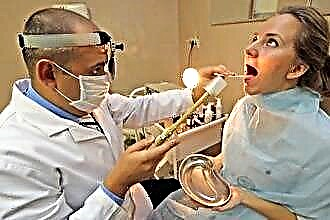The normal human heart rate is 60 to 90 beats per minute. A decrease in heart rate indicates sinus (sinus) bradycardia.
What it is
The heart contracts under the influence of an excitation wave that arises in itself, namely in the cells of the sinus node (pacemaker), in the right atrium. Bradycardia develops due to the slow production of electrical impulses.
The reasons are an increase in the influence of the parasympathetic nervous system on the heart through the vagus (vagal) nerve, the effect of various toxins on the sinus node, as well as its damage.
I think it is not worth long to explain why sinus bradycardia is bad. A slowdown in the work of the heart leads to an ineffective blood supply to all organs of the body. As a result, cells begin to experience oxygen starvation (hypoxia). This is especially dangerous for the brain: it needs about 20% of all oxygen consumed by the body. With severe bradycardia, there is a risk of complete cardiac arrest.
Sinus bradycardia may be the first early manifestation of a dangerous disease with an abnormally low heart rate and a fairly high percentage of deaths - sick sinus syndrome (SSS), which occurs mainly in the elderly.
However, I want to note that not every decrease in heart rate should be considered a pathology. For example, each of us at night, when we are fast asleep, the heartbeat can slow down to 30-40 beats per minute. This is due to the fact that the body requires much less oxygen during sleep than when we are awake. Taking advantage of the moment, the heart goes into "energy-saving mode".
Also, a resting heart rate of 40 to 55 beats per minute is considered the absolute norm for people involved in professional sports. The fact is that with regular intense training, the heart gradually adapts to heavy loads. Without going deep into the intricacies of biochemical processes, this phenomenon can be explained as follows: with constant physical exercise, the heart (mainly the myocardium of the left ventricle), like any other muscle, begins to gradually thicken and pushes blood into the aorta with greater force. As a result, fewer heart contractions are required for an adequate blood supply to the entire body.
In addition, it is relatively normal to read the heart rate (HR) from 55 and higher in people who are taking special medications. These are the so-called pulsating agents - beta-blockers and If-channel blockers. They are used when it is necessary to reduce the heart rate as much as possible, for example, in case of chronic heart failure.
Causes of occurrence
As already mentioned, physiological, that is, normal sinus bradyarrhythmia occurs during sleep and in professional athletes.
Pathological causes of sinus bradycardia, as well as any other rhythm disturbances, can be divided into 2 main groups: functional and organic.
Functional (non-cardiac) causes of sinus bradycardia:
- malfunction of the endocrine organs: hypothyroidism (deterioration in the functioning of the thyroid gland), adrenal insufficiency;
- neurocirculatory dystonia with increased tone of the parasympathetic nervous system;
- increased intracranial pressure;
- overdose of drugs (including pulsating drugs) - calcium antagonists, beta-blockers, If-channel blockers, cardiac glycosides;
- a significant increase in the concentration of potassium in the blood - this happens in the last stages of chronic renal failure or with the combined use of potassium-sparing diuretics, ACE inhibitors and potassium preparations.
Organic causes include:
- myocardial infarction;
- heart disease;
- myocarditis;
- postinfarction cardiosclerosis;
- heart damage in systemic diseases - arthritis, collagenosis, vasculitis.
Symptoms
The clinical picture of pathology is determined by the degree of decrease in heart rate. With moderate bradycardia, complaints may be absent altogether. With a pronounced decrease in heart rate, a person has:
- quickly onset fatigue, increased fatigue;
- drowsiness;
- dizziness;
- nausea;
- loss of consciousness (due to severe brain hypoxia).
ECG signs
An electrocardiogram will reveal the following signs of sinus bradycardia:
- a decrease in heart rate - in the form of an increase in the interval between PQRST complexes;
- correct sinus rhythm - the same distance between the R waves and the presence of positive P waves, which have a normal shape in leads II, III and aVF.
With sinus bradycardia caused by functional (non-cardiac) causes, the heart rate increases with little physical exertion or the administration of atropine, and respiratory arrhythmia also appears (increased heart rate during inhalation, decrease during exhalation).
With sinus bradycardia, which developed against the background of cardiac diseases, in response to physical activity and the introduction of atropine, the heart rate either does not change, or increases, but insignificantly.
If bradycardia is a manifestation of sick sinus syndrome, the cardiogram shows "jumping" attacks of paroxysmal supraventricular tachycardia, atrial fibrillation or flutter.
Treatment principles
Before starting treatment for sinus bradycardia, I focus on the following points:
- what caused the bradycardia - functional disorders or an existing cardiac disease;
- the degree of bradycardia;
- the severity of symptoms (persistent fainting);
- the presence of signs of sick sinus syndrome.
In the case of functional sinus bradycardia, it is enough to eliminate the cause - to normalize the level of thyroid hormones or the concentration of potassium in the blood, reduce intracranial pressure, adjust the dosage of drugs, etc. And for this it is necessary to undergo a thorough examination.
As a drug therapy, I use drugs that speed up the heart rate by weakening the influence of the vagus nerve. These medications are called anticholinergics. The most prominent representative of this group is Atropine. Sometimes I use medications that act on the same receptors in the heart as adrenaline - beta-blockers (Izadrin).
However, they are not suitable for permanent treatment. These drugs are only a temporary measure to restore the normal rhythm and stabilize the patient's condition.
You can get acquainted with the folk remedies for the treatment of bradycardia here. However, I want to warn you that their effectiveness has not been proven.
If a patient has atrial fibrillation attacks, I prescribe blood thinners (anticoagulants) - Warfarin, Dabigatran to prevent thrombus formation.
The main treatment for severe sinus bradycardia is the installation of a pacemaker (pacemaker). It is a small device that emits rhythmic electrical signals and literally makes the heart beat at the correct rhythm and frequency.
The operation of installing the pacemaker is performed in several stages. After local anesthesia, the skin is cut under the collarbone and a pacemaker is inserted. The wires from it reach the heart through the subclavian vein. Test electrical impulses are given. In parallel, a cardiogram is recorded. If the heart is functioning normally, the procedure is considered successful.
In addition to persistent bradycardia and sick sinus syndrome, pacemaker is established with atrioventricular block II and III degree, when the conduction of the excitation wave from the atria to the ventricles is disturbed, as well as in severe heart failure.
Old age is not a contraindication for this operation.
For more information on pacing, click here.
Case from practice
I would like to give an interesting example from my practice. A 54-year-old woman came to me for an appointment, who recently began to note that she gets tired very quickly and her head is spinning. Suffering from hypertension and chronic heart failure, takes Spironolactone, Perindopril and Amlodipine. General examination showed a decrease in heart rate to 48 beats per minute, blood pressure was normal. I ordered an EKG which showed sinus bradycardia and high and peaked T-waves, indicating an elevated blood potassium concentration. Blood test confirmed hyperkalemia. The dosage of the drugs taken could not cause an increase in potassium, the kidney function was preserved. Upon more detailed inquiry, I was able to find out that the patient, on the advice of her relatives "to improve the nutrition of the heart," took dietary supplements containing potassium. I recommended that you stop taking them. After the abolition of these medications, the pulse returned to normal, the level of potassium in the blood decreased, and the head stopped spinning.
Expert advice
With a rare pulse, you should definitely visit a doctor. But if you or your relative begin to feel very unwell, you need to call an ambulance. Before the doctors arrive, you can drink a cup of coffee or strong tea, which will temporarily increase your heart rate. It also helps to do simple exercises - squats, push-ups from the floor. In response to physical activity, adrenaline is produced, which stimulates the heart. If you or a loved one feels that you are too weak, lie down with your feet slightly above head level. Under the influence of gravity, blood will begin to rush to the brain, this will prevent losing consciousness. Read more about how to help with bradycardia at home here.



